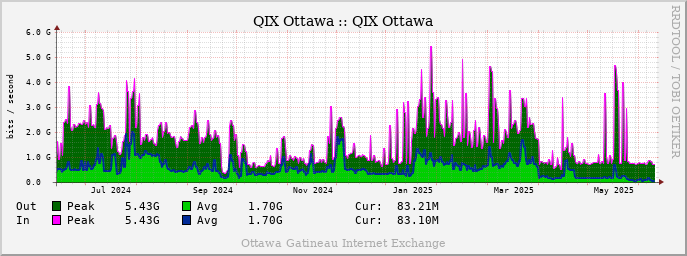Current Peers
https://ixp.ogix.ca/customer/details
Useful Links
Traffic levels

List of DNS Servers
- Woodynet (Quad9)
- Packet clearing house
- Cloudflare (1.1.1.1)
Contact [email protected] for more information on how to become a peer.
Current Peers
https://ixp.ogix.ca/customer/details
Useful Links
Traffic levels

List of DNS Servers
- Woodynet (Quad9)
- Packet clearing house
- Cloudflare (1.1.1.1)
Contact [email protected] for more information on how to become a peer.